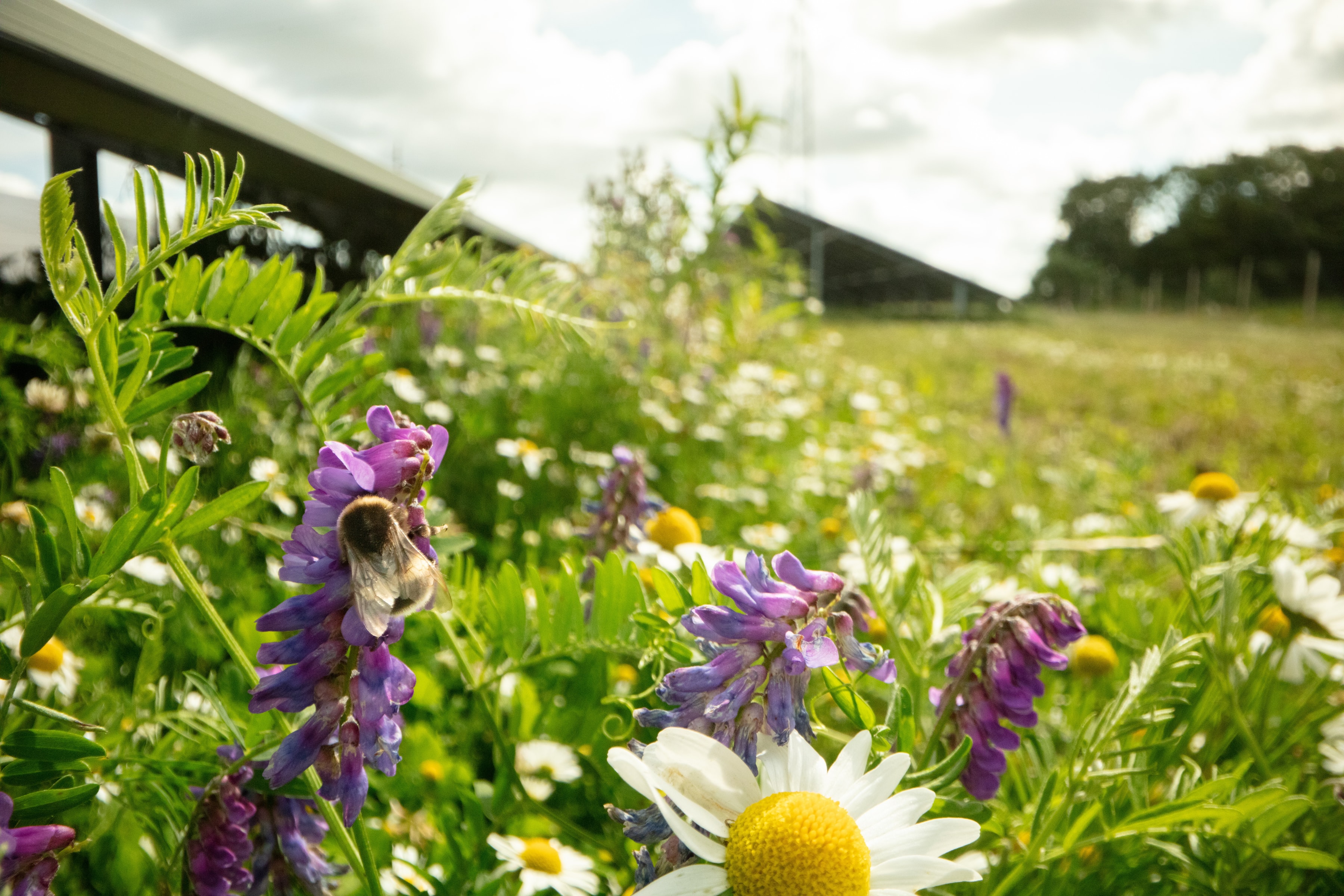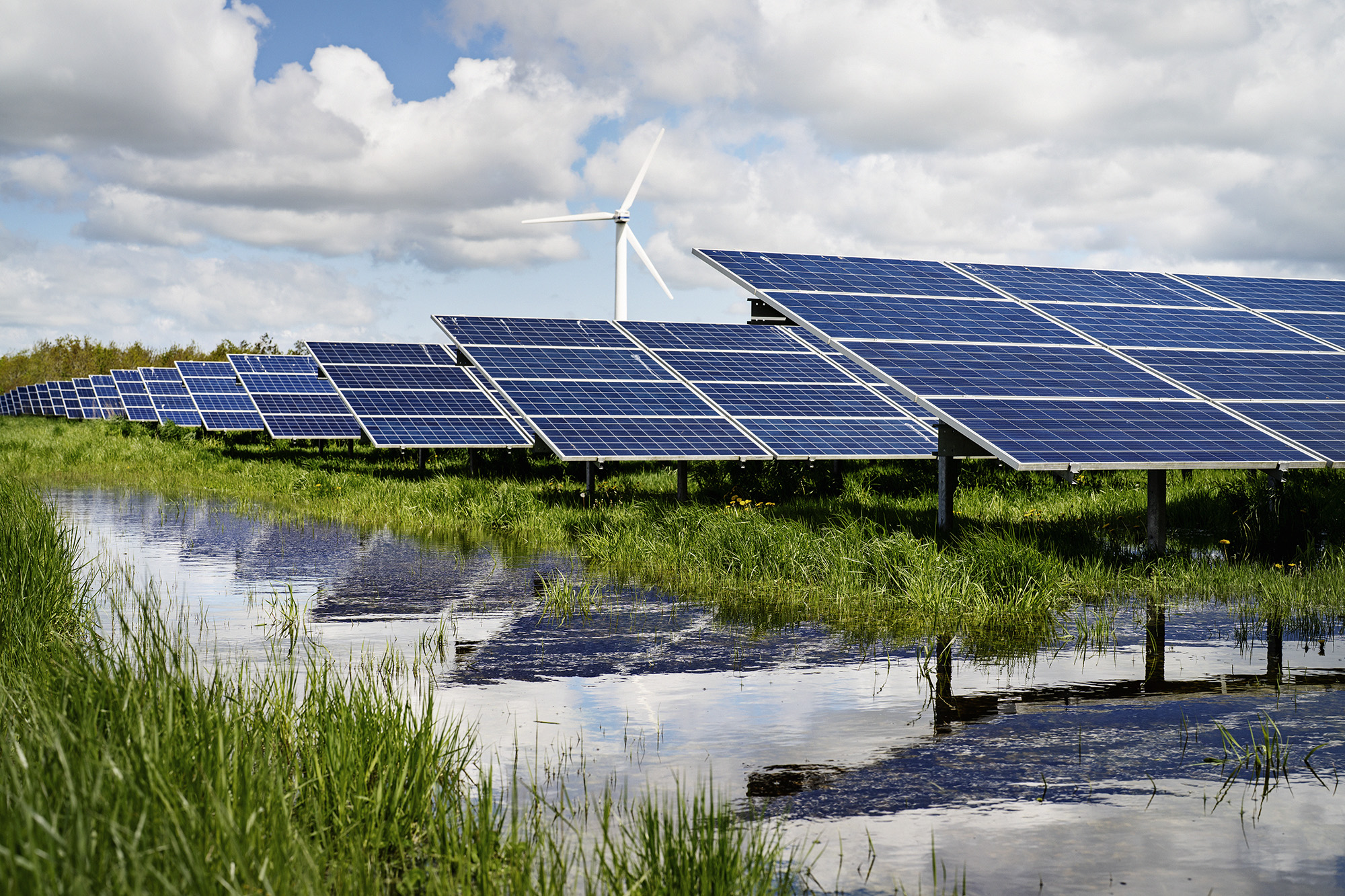Water habitats
In some of our solar parks, we are working with water habitats and restoring water bodies to their natural state.
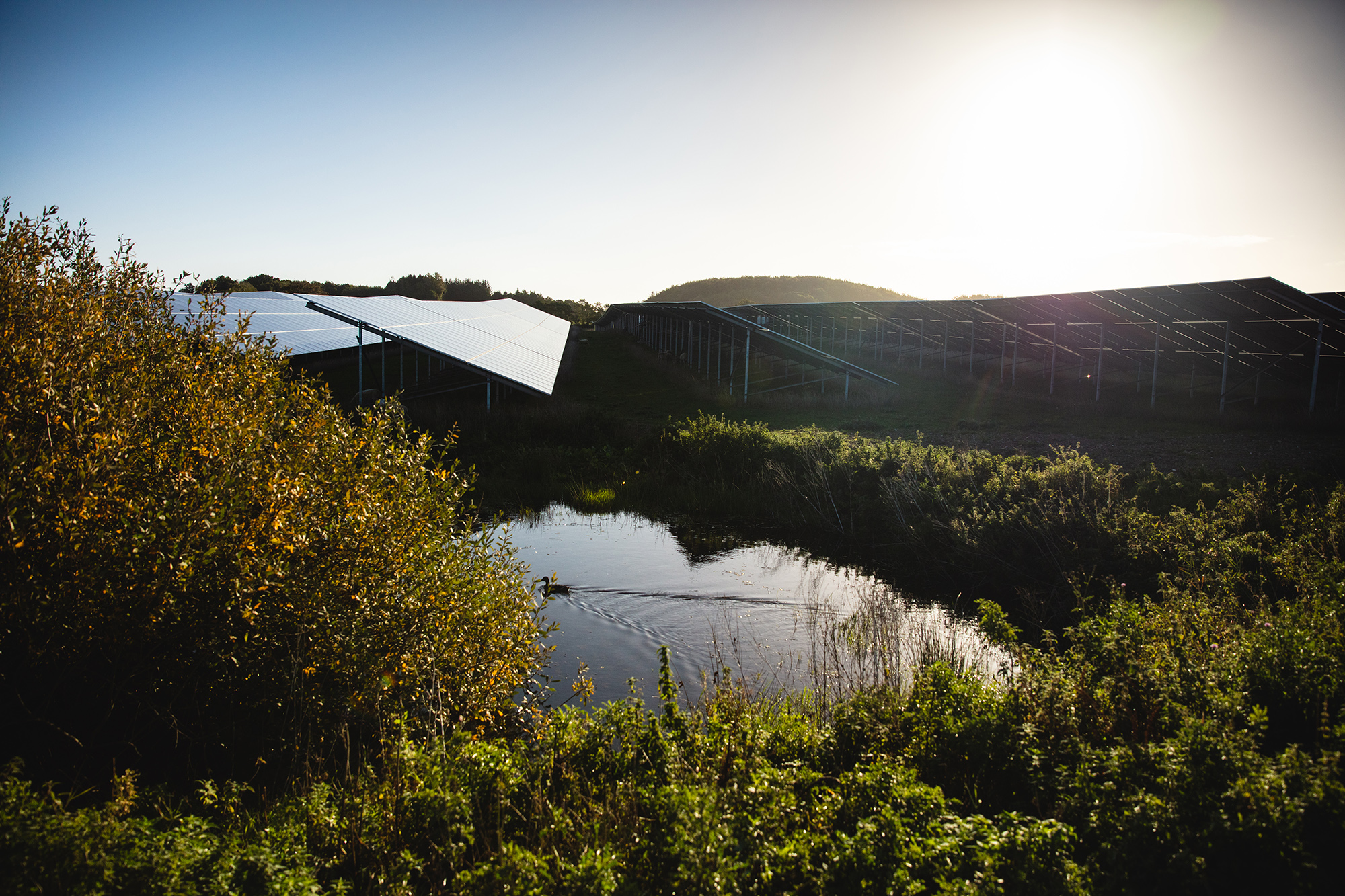
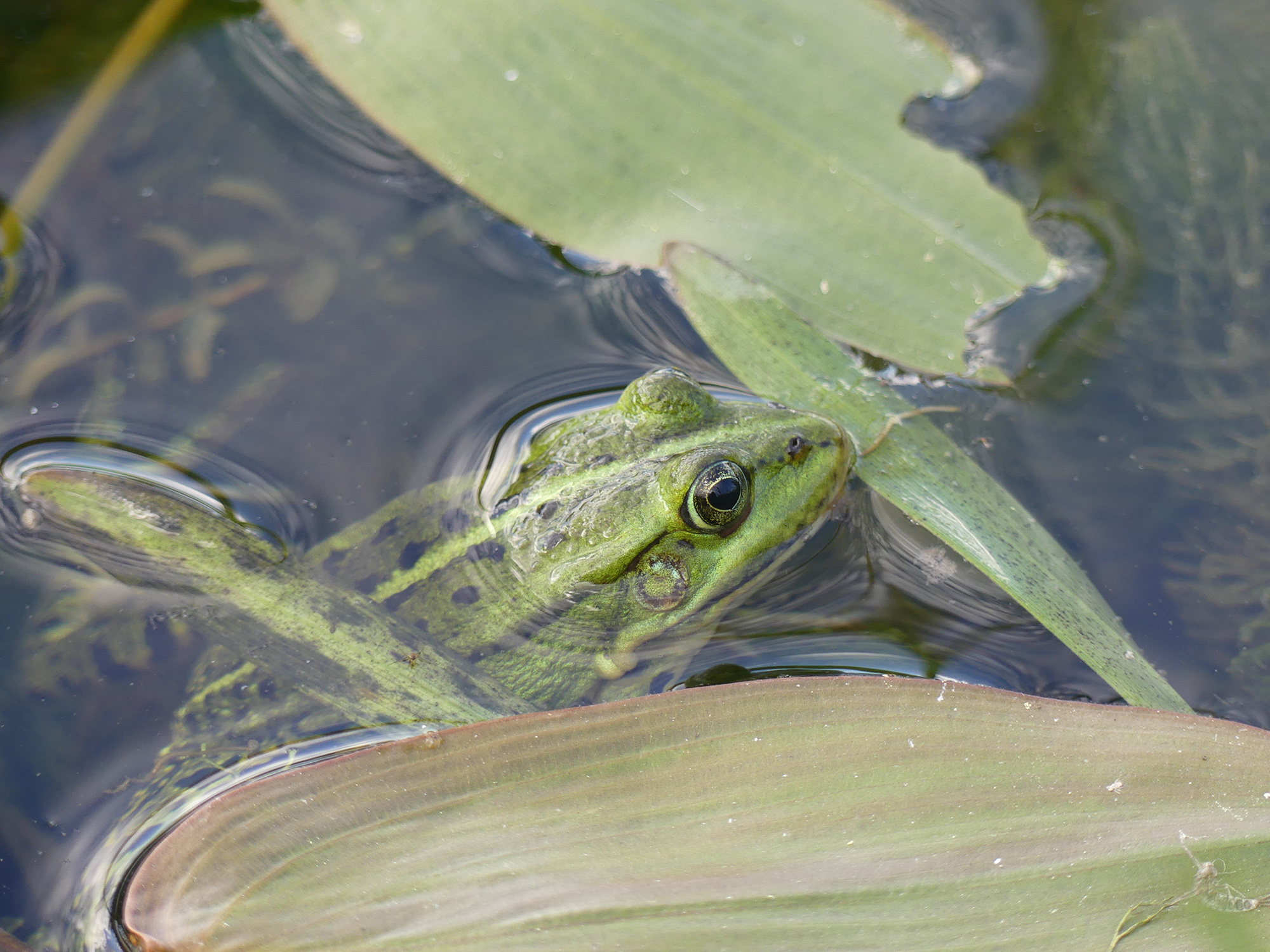
Waterholes
We focus on creating new waterholes and restoring neglected and polluted waterholes. It helps to restore the natural landscape and create more variation, microclimates, and habitats. Restoration increases aquatic plant and animal diversity, as well as providing water for birds, insects and animals moving through the landscape.
Re-wetting
Re-wetting restores and improves the hydrological conditions of degraded or drained wetlands, fostering habitats for diverse aquatic and semi-aquatic plants and animals, including reptiles, amphibians, fish, insects, and birds. Wetlands are crucial habitats for nesting, migration stopovers, and foraging for many animals. Re-wetting can provide ecosystem services such as water purification, nutrient cycling, water retention and overall ecosystem health.
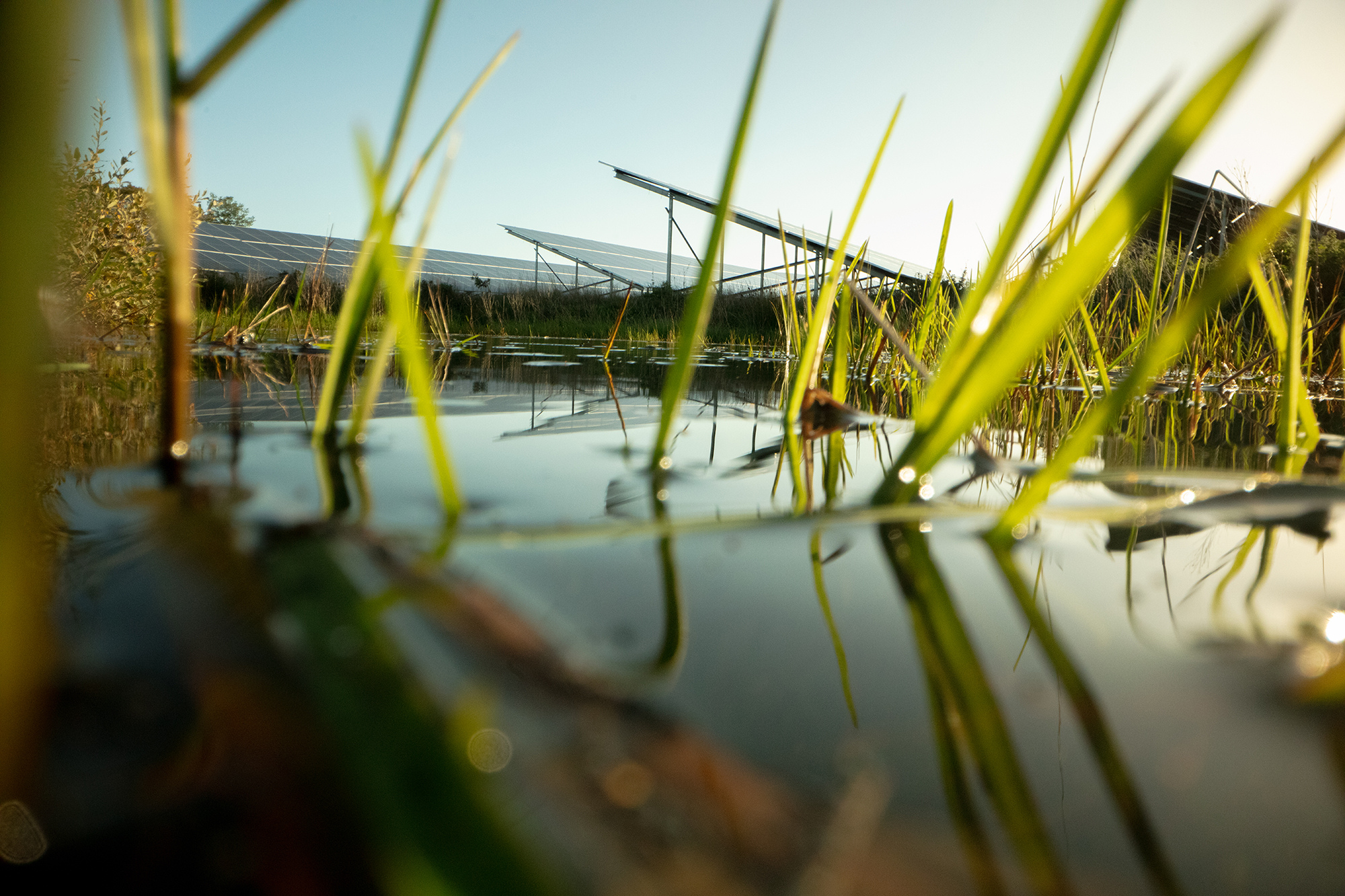
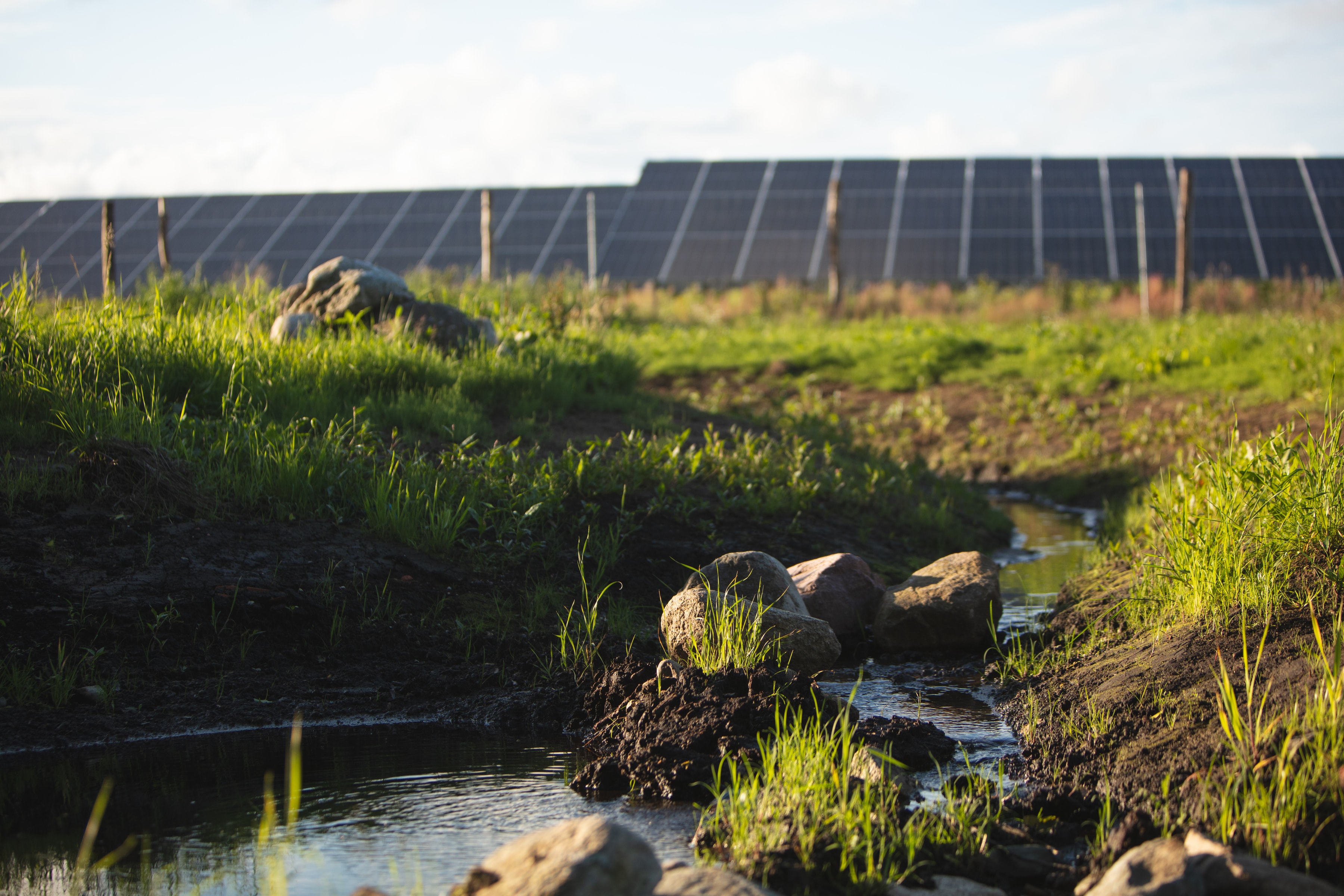
Re-meandering - restoring to its natural state
Re-meandering is the process of restoring a river or a stream or a stretch of it. This can be to dig up the piped stream or straightened stream to let it regain its natural curves and patterns. This is a very impactful tool that allows the water to flow freely and creates habitats and food for more fish, birds, insects, plants, and mammals. Streams and rivers have been heavily manipulated to create dams for energy, more agricultural land etc. Many species connected to this ecosystem are threatened and endangered. The ecosystem provides services like water retention, water purification, nutrient cycling and recreational opportunities like fishing or canoeing.
